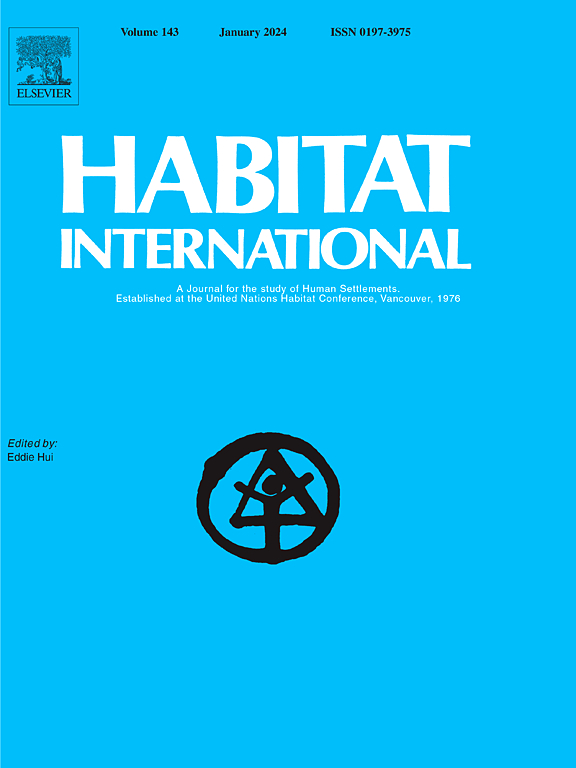No space for culture: the juxtaposition of urban residential planning and amaXhosa cultural land use practices in Makhanda, South Africa
IF 7
1区 经济学
Q1 DEVELOPMENT STUDIES
引用次数: 0
Abstract
Cultural practices are often inseparable from their spatial manifestations. The spatiality of culture is seen in the existence of ritual spaces, architectural forms, and the organisation of space, for example. In traditional amaXhosa culture, the role of the extended family and spaces for various ritual and cultural practices transform residential spaces. This paper explores the contrasts between the spatial needs attached to cultural practices and the urban residential planning in South African township areas. It utilises Lefebvre's Production of Space to frame these juxtapositions and understand adaptive practices in the use of space within this context. The research uses a case study of the Makanaskop township in Makhanda, South Africa. This township is typical of state-housing provision during both the apartheid and post-apartheid periods: small, single residential plots with housing suited to nuclear families. Through interviews and participatory mapping with nine households, the findings of this research suggest that the size and spatial organisation of plots do not pay cognizance to the spatial practices of amaXhosa residents. Faced with spatial constraints, residents have had to adapt their cultural practices, and sometimes contravene planning systems and bylaws through insurgent planning and quiet encroachment.
没有文化空间:南非Makhanda城市住宅规划和amaXhosa文化土地使用实践的并置
文化实践往往与其空间表现分不开。例如,文化的空间性体现在仪式空间、建筑形式和空间组织的存在中。在传统的amaXhosa文化中,大家庭的角色和各种仪式和文化习俗的空间改变了居住空间。本文探讨了南非乡镇地区文化实践的空间需求与城市居住规划之间的对比。它利用列斐伏尔的空间生产来构建这些并置,并理解在这种背景下使用空间的适应性实践。该研究使用了南非Makhanda的Makanaskop镇的案例研究。这个小镇在种族隔离时期和后种族隔离时期都是典型的国家住房供应:小而单一的住宅地块,适合核心家庭居住。通过对9个家庭的访谈和参与式测绘,本研究的结果表明,地块的大小和空间组织并没有考虑到amaXhosa居民的空间实践。面对空间的限制,居民不得不适应他们的文化习俗,有时通过反叛的规划和安静的侵占来违反规划系统和章程。
本文章由计算机程序翻译,如有差异,请以英文原文为准。
求助全文
约1分钟内获得全文
求助全文
来源期刊

Habitat International
Multiple-
CiteScore
10.50
自引率
10.30%
发文量
151
审稿时长
38 days
期刊介绍:
Habitat International is dedicated to the study of urban and rural human settlements: their planning, design, production and management. Its main focus is on urbanisation in its broadest sense in the developing world. However, increasingly the interrelationships and linkages between cities and towns in the developing and developed worlds are becoming apparent and solutions to the problems that result are urgently required. The economic, social, technological and political systems of the world are intertwined and changes in one region almost always affect other regions.
 求助内容:
求助内容: 应助结果提醒方式:
应助结果提醒方式:


